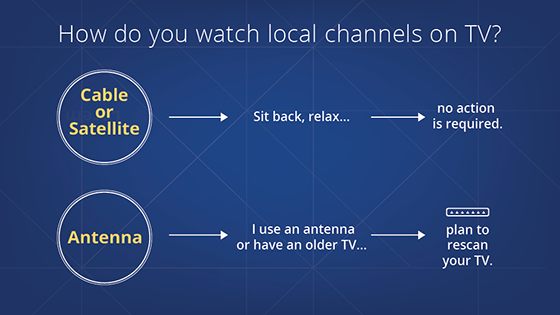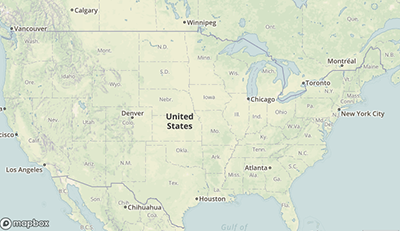This page has been archived and is no longer actively maintained by the FCC.
For information on how to rescan your over-the-air TV antenna, visit fcc.gov/rescan.
Some local TV stations in cities across the U.S. will be changing their over-the-air broadcast frequencies between now and July 2020.
People who watch free over-the-air television with an antenna will need to rescan their TV set each time a station moves to continue receiving the local channel. It's the same scan that you did to find your local channels when you set up your TV or converter box for the first time. Except in rare circumstances, no new equipment or services are required.
Subscribers to cable or satellite TV do not need to rescan. Service providers will do it for you.
The FCC's Consumer Toolkit offers guidance on TV frequency changes for people who use an antenna to watch over-the-air television.
| Rescanning only applies to people who receive their local channels using a TV antenna. Cable and satellite subscribers are not affected. |

What's Happening
Many over-the-air TV channels across the U.S. will be changing frequencies to help open up airwaves for new high-speed wireless services. The actual channel number on your TV will not change. After the TV is rescanned, it will be the same as before.
Why It Matters
A change in frequency impacts how a channel is received over the air by your TV. If you watch free over-the-air television with an antenna, you will need to rescan your TV set each time a station moves to a new frequency to be sure your TV recognizes the new frequency when you tune to that channel.
When to Rescan
Some local TV channels will be changing frequencies in phases through mid-2020. However, because TV channels are moving at different times, you may need to rescan your TV set more than once. Stay tuned to your local channels for information on when to rescan, as broadcasters will give viewers at least 30 days notice.
Whether or not your local TV stations are changing, it is a good idea to rescan periodically – if you haven't scanned your TV recently, you might be surprised at how many stations are now available.
Refer to our "Remember to Rescan" video and instructions to learn how to rescan your TV.
Have questions?
Viewers who need assistance may also contact the FCC call center toll-free by dialing 1-888-CALLFCC (1-888-225-5322) and pressing "6" to speak to a help desk representative. The call center is staffed from 8:00 a.m. to 1:00 a.m. Eastern time, seven days a week, to enable consumers throughout the country to obtain assistance during evening and weekend hours.
